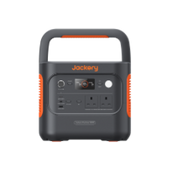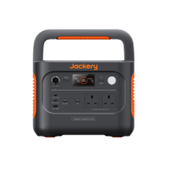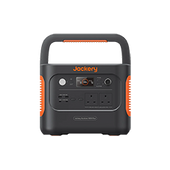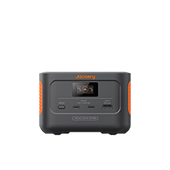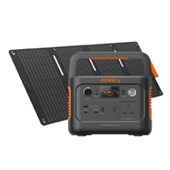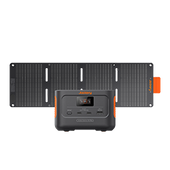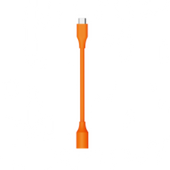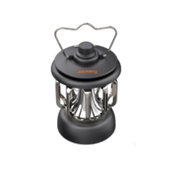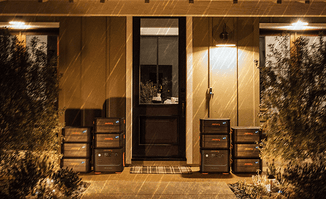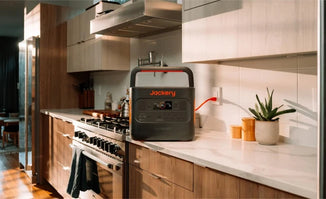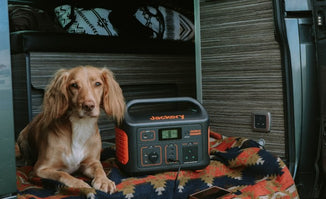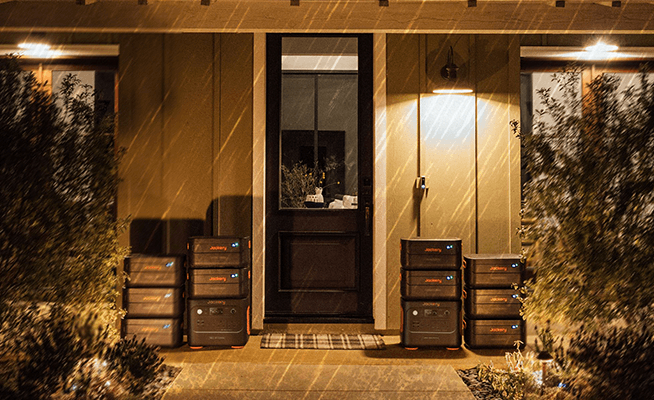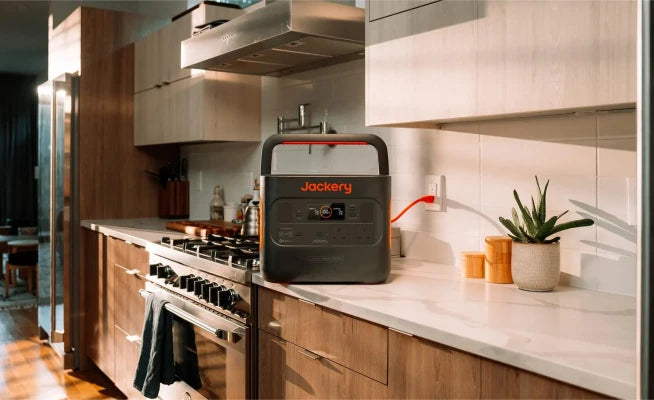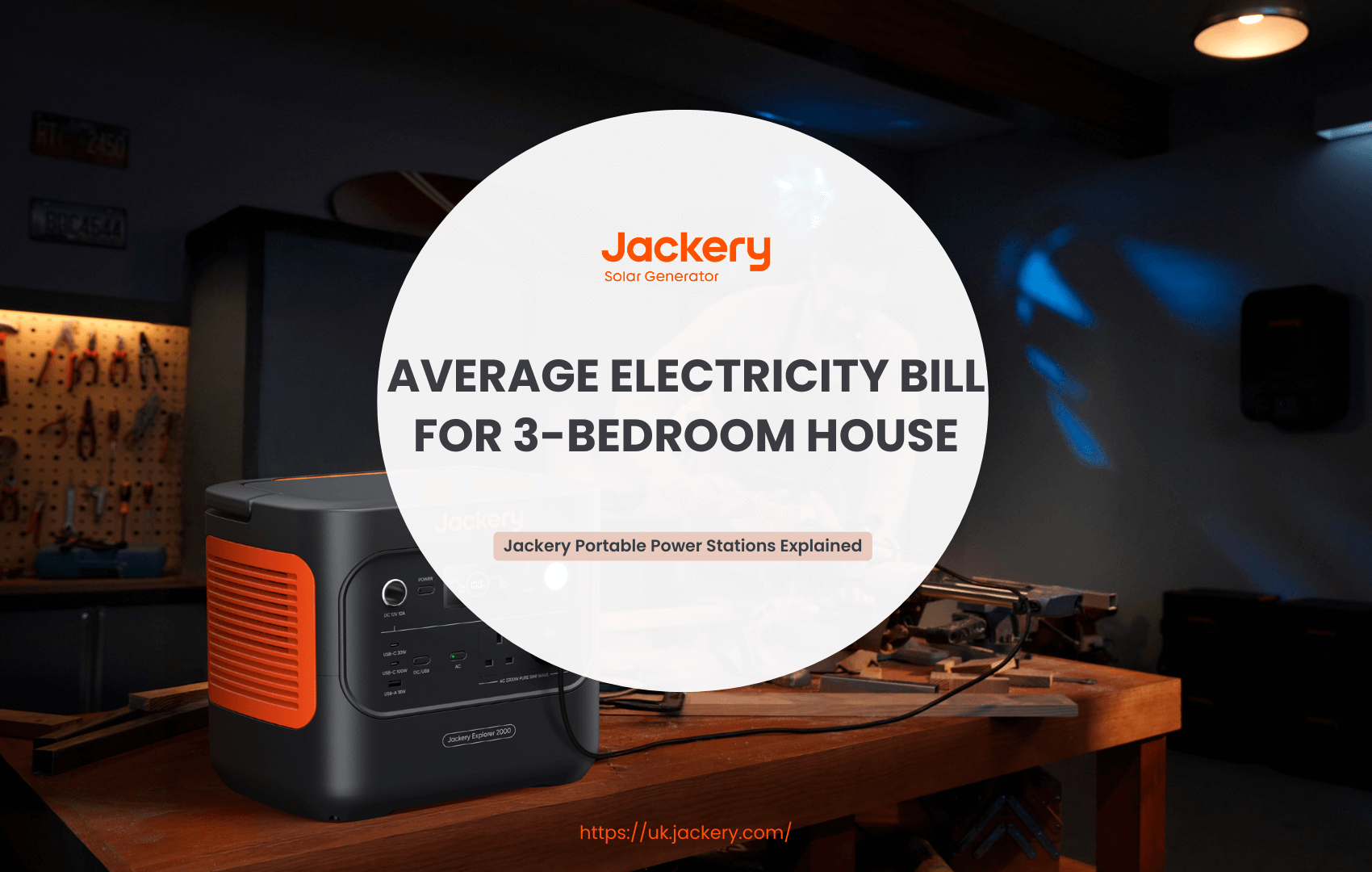The daily expenses of UK households continue to rise, putting pressure on families nationwide. Therefore, the average electricity bill in the UK is a long-term concern for most households. Homeowners of three-bedroom properties in the UK are no exception. They are particularly concerned about the average electricity bill and want to know how it compares to the national average.
Don't worry; this blog lets you learn about the average annual electricity consumption and electricity bills of a typical three-bedroom home in the UK. You will also get additional information on factors that affect the electricity bills of three-bedroom homes and ways to save money. We recommend the Jackery Portable Power Station to power your household appliances to save electric bills.
|
Key Takeaways: |
|
● A typical three-bedroom home in England, Scotland, and Wales consumes 2,700 kWh of electricity annually. In the UK, a typical three-bedroom household consumes about 225 kWh per month (averaged over the year) and about 7.4 kWh per day (averaged over the year). ● The average annual electricity bill for a typical three-bedroom home in England, Scotland and Wales is £926.81. ● For an average three-bedroom home, electricity is an upper-middle cost of living. ● Old appliances, frequent use of high-power appliances and poor insulation can all lead to high electricity bills for a three-bedroom home. ● Using energy-efficient appliances, improving your home's insulation, and even switching to renewable energy can reduce the electricity bill for a three-bedroom house. ● We recommend the Jackery Explorer 2000 Plus or 1000 Plus portable power station for charging household appliances. It offers an expandable capacity and is portable. |
Average Electricity Usage for a Three-Bedroom House in the UK
In the UK, average electricity consumption often varies depending on the size of the home. Energy consumption is expressed in kilowatt-hours (kWh). For example, 1 kWh is enough to power a 10-watt light bulb for 100 hours. In the UK, the average electricity consumption for a three-bedroom home is often expressed in kWh/year.
Organisations such as the Office of Gas and Electricity Markets (Ofgem) publish household energy consumption reports, which may include electricity consumption data for each household type. Average electricity consumption data for a three-bedroom home can help people assess energy efficiency, develop energy-saving policies, or conduct market analysis.
Ofgem generally considers a three-bedroom home to be a medium-consuming property. A three-bedroom home usually houses 3-5 people, and its electricity demand is increased compared to a smaller home (such as a one- or two-bedroom home) due to more living space, household appliances, and potentially higher energy-consuming activities.
According to Ofgem, a typical three-bedroom home in England, Scotland, and Wales consumes 2,700 kWh of electricity annually. In the UK, a typical three-bedroom household consumes about 225 kWh per month (averaged over the year) and about 7.4 kWh per day (averaged over the year).
In short, a three-bedroom home's average annual electricity consumption in the UK is 2,700 kWh. However, a household's electricity consumption must be comprehensively assessed, considering household equipment, living habits, and regional climate.
Average Electricity Bill for a Three-Bedroom House in the UK
If you are on a flat rate, it is easy to calculate your electricity bill if you know how much electricity you consume. A flat rate means that people pay the same price for electricity at any time of the day. In the UK, the average electricity bill for a three-bedroom home using the Energy Price Cap is calculated by combining the current price cap and the electricity a home consumes.
How to Calculate the Average Electricity Bill for a Three-Bedroom House in the UK?
From the above, a typical three-bedroom home on a flat rate (England, Scotland and Wales) consumes 2,700 kWh of electricity per year.
The per-unit energy price cap and fixed charge are based on the average electricity bill in England, Scotland and Wales, including VAT (5%). From April 1 to June 30, 2025, Ofgem has set a per-unit energy price cap of 27.03 pence per kilowatt-hour (kWh), while the daily standing charge is 53.80 pence.
You can estimate the average annual electricity bill for a three-bedroom home in the UK using the following formula:
The average annual electricity bill for a three-bedroom home in the UK = (electricity usage × unit electricity price) + (daily standing charge × 365 days)
(2,700kWh × 27.03p/kWh) + (53.80p/day × 365 days) = £926.81
Therefore, the annual electricity bill for a three-bedroom home in the UK is £926.81, and the monthly electricity bill is about £77.23 (spread over yearly usage).
Average Electricity Bill for a Three-Bedroom House in Different Parts of the UK
Depending on where you live, you pay a different daily standing charge and the price of electricity for each unit of energy you use. Here are the daily standing charges and unit electricity prices for different parts of the UK:
|
Region |
Unit rate April to June 2025 |
Daily standing charge April to June 2025 |
|
North West |
27.93 pence per kWh |
51.31 pence per day |
|
Northern |
26.24 pence per kWh |
59.83 pence per day |
|
Yorkshire |
26.19 pence per kWh |
58.64 pence per day |
|
Northern Scotland |
26.99 pence per kWh |
60.87 pence per day |
|
Southern |
27.24 pence per kWh |
45.13 pence per day |
|
Southern Scotland |
25.82 pence per kWh |
56.50 pence per day |
|
North Wales and Mersey |
28.50 pence per kWh |
69.54 pence per day |
|
London |
26.48 pence per kWh |
46.20 pence per day |
|
South East |
27.68 pence per kWh |
48.03 pence per day |
|
Eastern |
27.33 pence per kWh |
48.65 pence per day |
|
East Midlands |
26.37 pence per kWh |
49.38 pence per day |
|
Midlands |
26.46 pence per kWh |
53.14 pence per day |
|
Southern Western |
27.58 pence per kWh |
54.27 pence per day |
|
South Wales |
27.61 pence per kWh |
51.79 pence per day |
(Data Source: Ofgem)
Based on the energy price caps above, the average electricity bill for a three-bedroom home in different parts of the UK can be calculated. It is known that a typical three-bedroom house in the UK (England, Scotland and Wales) consumes 2,700 kWh of electricity per year. Then the average electricity bill for a three-bedroom house in each region of the UK is as follows:
|
Region |
Average Annual Electricity Bill (£) |
Average Monthly Electricity Bill (£) |
|
North West |
941.39 |
78.45 |
|
Northern |
926.86 |
77.24 |
|
Yorkshire |
921.17 |
76.76 |
|
Northern Scotland |
950.91 |
79.24 |
|
Southern |
900.20 |
75.02 |
|
Southern Scotland |
903.37 |
75.28 |
|
North Wales and Mersey |
1023.32 |
85.28 |
|
London |
883.59 |
73.63 |
|
South East |
922.67 |
76.89 |
|
Eastern |
915.48 |
76.29 |
|
East Midlands |
892.23 |
74.35 |
|
Midlands |
908.38 |
75.70 |
|
Southern Western |
942.75 |
78.56 |
|
South Wales |
934.50 |
77.88 |
|
Great Britain Average |
926.81 |
77.23 |
The data in this table is an estimate and is for reference only.

Are the Average Electricity Bills High for a Three-Bedroom House in the UK?
The cost of electricity for a three-bedroom home in the UK depends on several factors. Still, it is often a more significant household expense than other living costs. Suppose you want to know how much electricity costs account for the average cost of living in a three-bedroom home. In that case, you must analyse and consider several other basic expenses. Here is an overview of the typical living costs for a three-bedroom home in the UK (for reference only):
Mortgage: The monthly cost of a three-bedroom home in the UK is approximately £1,147. However, interest rate fluctuations and loan terms have a significant impact, and the actual amount needs to be calculated according to the specific loan plan.
Energy Costs: Based on the above, the average electricity cost for a typical three-bedroom semi-detached home in the UK is approximately £77. Assuming that electricity costs account for half of the energy costs, its energy costs are approximately £144.
Council Tax: Council tax in the UK is usually levied according to the property valuation level and area, taking £139 as an example.
Water Costs: In the UK, water costs are calculated based on water consumption and fixed annual fees in some areas. The monthly water bill for an average three-bedroom home is approximately £50.
Broadband and Phone: The prices of broadband and phone packages in the UK vary greatly, with the basic package (broadband + unlimited calls) costing about £40-60 per month.
Home Insurance: In the UK, the monthly home insurance cost for an average three-bedroom home is about £25, depending on the value of the house, the crime rate in the area, and the coverage of the insurance.
Other Expenses: The cost of living for a three-bedroom home should also include regular maintenance such as boiler service, garden care, and minor repairs. In addition to the above living costs, a three-bedroom home will have at least £150 in monthly expenses.
|
Bill |
Cost Per Month |
|
Mortgage |
£1,147 |
|
Energy (Gas & Electricity) |
£144 |
|
Council Tax |
£139 |
|
Water |
£50 |
|
Broadband & Phone |
£40-60 |
|
Home Insurance |
£25 |
|
Other Expenses |
£150 |
|
Total |
£1,375 |
(Data Source: warmzilla.co.uk)
The above are all estimated data, and the actual living costs of each item will be affected by factors such as regional differences. In addition, the above are all basic living costs, excluding food, transportation or other living expenses.
Based on the above, in the UK, the electricity bill for an average three-bedroom home (about £77 per month) is much lower than the cost of living, such as mortgage and municipal tax. However, it is higher than living costs such as water bills, broadband and phone, and home insurance. Therefore, electricity bills are an upper-middle cost of living for an average three-bedroom home family.
What Factors Affect the Electricity Bill for a Three-Bedroom House?
In the UK, electricity bills for a three-bedroom home are affected by various factors, including electricity usage habits, seasonal differences, and house structure. In the UK, electricity bills for a three-bedroom home are mainly affected by the following factors:

Electricity Usage and Household Habits
The number of appliances (such as refrigerators, washing machines, ovens, etc.) and the frequency of use in a three-bedroom home directly affect the electricity bill. Frequent use of high-power appliances such as washing machines, freezers, and dryers generally increases electricity bills. Families who work from home or stay home for extended periods consume more electricity when using computers, air conditioning, continuous lighting, etc. In addition, the larger the population, the higher the demand for electricity for lighting, charging, entertainment equipment, etc.
Electric Appliance Energy Efficiency
The energy efficiency rating (such as A+++ to D) of home appliances such as washing machines, TVs, and lamps in a three-bedroom home will directly affect their electricity consumption. Appliances with low energy efficiency ratings (ancient appliances) will consume more electricity and have higher electricity bills as they become less efficient due to daily wear and tear. For example, an old refrigerator may cost more than £100 per year, more than an energy-saving model.
In addition, appliances such as TVs, game consoles, chargers, etc., that are not entirely turned off will continue to consume electricity ("vampire electricity").
Regional and Seasonal Differences
A three-bedroom house's electricity consumption and bills will vary according to regional and seasonal differences. In the UK, heating needs increase in winter. Your electricity bills may double if you rely on electric heating devices (such as electric heaters). Using air conditioning or electric fans in summer will also increase expenses. However, due to the increase in lighting and heating needs, electricity bills in winter are significantly higher than in summer. Compared with other parts of the UK, northern regions (such as Scotland) usually have colder winters, which may extend the heating period.
House Structure and Insulation Performance
In the UK, newly built three-bedroom houses usually meet higher insulation standards and have lower energy consumption. Older homes (especially those without sound insulation) lose heat quickly and use more electricity to heat. In addition, poor insulation in the attic or gaps between doors and windows can cause heating and cooling systems to be overloaded and increase power consumption, thereby improving your electricity bills.
How to Lower the Electricity Bill for a Three-Bedroom House?
In the UK, reducing electricity bills for three-bedroom homes requires multiple aspects, including energy efficiency, electricity usage habits, and supplier selection. The following are specific strategies to help UK three-bedroom homes save money on electricity bills:

Optimise the Use of Home Appliances and Equipment
To save money on electricity bills, three-bedroom homes should consider replacing old, inefficient and power-hungry appliances with appliances rated A+++. Replacing traditional light bulbs with LED bulbs can reduce energy consumption by up to 80%. Smart thermostats can automatically adjust heating and air conditioning temperatures according to the daily routines of three-bedroom homes, reducing energy waste.
Improve the Insulation Performance of the House
Upgrade the insulation of walls, attics, and floors (such as filling with insulation materials) to reduce heat loss in winter. Please also carefully check the sealing of windows and door frames and use draught strips or double-glazed windows to prevent cold air from penetrating. When heating in winter, try to draw curtains to block cold winds and increase the insulation capacity of the house.
Take Advantage of Low Off-Peak Electricity Prices
A three-bedroom residential household using time-of-use electricity rates can take advantage of low off-peak electricity prices to reduce monthly electricity bills. Fully charge a portable power station during off-peak hours (3 a.m. to 6 a.m.). The portable power station can then be used to power other appliances or electronic devices during peak hours. For example, a Jackery Explorer 2000 Plus Portable Power Station (2042Wh capacity) can power a 1050-watt microwave oven for about 1.5 hours after a full charge.

Switch to Renewable Energy
A three-bedroom residential household can install a rooftop solar system to generate electricity to offset some of its electricity needs. Although the government has cancelled the relevant subsidies, the equipment cost has fallen recently, and the long-term benefits are significant.
The government also helps households offset some of the equipment and installation costs through SEG to buy back the excess electricity generated by the household rooftop solar system. In addition, installing an air- or ground-source heat pump saves 30% to 50% energy compared to a traditional boiler.
Optimise Electricity Usage Habits
For a three-bedroom residential household, paying attention to energy conservation in daily electricity usage is the easiest way to reduce electricity bills. Here are some energy-saving habits to consider:
Turn off unused electrical appliances.
Use the microwave instead of the oven to heat small portions of food.
Clean air conditioning filters and check boiler efficiency regularly.
Run washing machines and dishwashers at full capacity.
Unplug electronic devices as soon as they are fully charged to avoid idling.
Compare Prices and Switch Suppliers
You will likely find cheaper energy packages using price comparison sites such as Uswitch and MoneySuperMarket. If you can, switch to a cheaper energy supplier or energy plan that suits you as soon as possible. For example, a fixed-price plan can help a three-bedroom home avoid the risk of fluctuating electricity prices in winter.
Jackery Portable Power Stations to Lower Electric Bills
The power station captures free solar energy when connected to Jackery Portable Power Station and Jackery Solar Panels. You can then use this stored energy to power your devices and appliances instead of drawing electricity from the grid, thus lowering your consumption and bill.
Also, you can charge the Jackery Portable Power Station during off-peak hours, when electricity rates are typically lower, and then use that stored power during peak hours, when rates are higher. This strategy helps you avoid paying higher electricity costs.
While not directly saving on your regular bill, having a Jackery as a backup prevents you from losing perishable food, interrupting work, or facing other inconveniences during power outages. This indirectly saves you money by avoiding potential losses.
Jackery Explorer 1000 Plus
With its enhanced features, the Jackery Explorer 1000 Plus can be valuable in reducing your electric bills. It can handle a significant solar input, allowing faster and more efficient recharging from solar panels compared to smaller capacity models.

While the maximum input wattage depends on the panels used, it's designed to work efficiently with the Jackery SolarSaga series. You can connect multiple panels to maximise charging speed. Some configurations can achieve a full solar recharge in as little as 2 hours using four SolarSaga 200W solar panels.
Like other Jackery power stations, the 1000 Plus incorporates MPPT (Maximum Power Point Tracking) technology. This technology optimises the energy harvested from solar panels, ensuring you get the most out of the available sunlight and charge your power station more quickly. Thus, it maximises the use of free solar energy and reduces reliance on grid charging.
With a base capacity 1264Wh, the Explorer 1000 Plus can store significant energy. Using stored solar power, you can power more appliances for longer durations, directly offsetting your electricity consumption from the grid.
A standout feature of the 1000 Plus is its expandability. You can connect up to three additional battery packs to reach a total capacity of 5kWh. This significantly increases the amount of stored energy available, enabling you to power larger appliances for extended periods or provide substantial backup power, reducing your dependence on the grid.
|
Jackery Explorer 1000 Plus Running Time |
|
|
Electric Kettle (600W) |
1.7-6.7H |
|
Coffee Maker (550W) |
1.8-7.3H |
|
Refrigerator (300W) |
3.2-13.3H |
|
Projector (100W) |
8.8-40H |
|
TV (60W) |
13.2-66.7H |
(*The working hours are only for reference; the actual working hours depend on your usage.)
Jackery Explorer 2000 Plus
The Jackery Explorer 2000 Plus, with its substantial capacity and advanced features, offers significant potential for saving on electric bills, especially when integrated with solar power.
The Explorer 2000 Plus can handle a significant solar input (up to 1400W with dual DC ports), allowing for rapid recharging using solar panels. For instance, it can be fully charged in about 2 hours using six 200W solar panels. This enables you to harness more free solar energy in a shorter time frame.

With a 2042.8Wh capacity, the Explorer 2000 Plus can store much energy. This allows you to run various appliances on solar power for extended periods, directly reducing your grid electricity consumption. For example, it can power a 300W refrigerator for approximately 5.3 hours.
A key advantage is its ability to expand its capacity up to 12kWh by connecting up to five additional battery packs. This massive storage potential allows you to power even more of your household appliances for longer durations, covering a significant portion of your daily energy needs with stored solar power.
The Explorer 2000 Plus features multiple AC outlets, delivering a continuous output of 3000W (with a 6000W surge peak). This high power output allows you to run energy-intensive appliances like electric ovens, power tools, and even some air conditioning units on stored solar energy, leading to substantial savings on your electricity bill.
Equipped with USB-A and high-power 100W USB-C ports, it can efficiently charge your electronic devices, reducing your reliance on grid power for these needs.
|
Jackery Explorer 2000 Plus Running Time |
|
|
Electric Kettle (600W) |
2.7-16H |
|
Coffee Maker (550W) |
2.9-17.5H |
|
Refrigerator (300W) |
5.3-32H |
|
Projector (100W) |
14.2-96H |
|
TV (60W) |
21.5-160H |
(*The working hours are only for reference; the actual working hours depend on your usage.)
FAQs
The following are the frequently asked questions about the average electricity bill for a three-bedroom house in the UK.
1. What is the average energy bill for a three-bed house in the UK?
According to britishgas.co.uk, the average energy bill for a three-bedroom house in the UK is £1,737.93 (for direct debit users). If the payment method is pay-as-you-go, the average energy bill is £1,850.63. If the payment method is pay-as-you-go, the average energy bill is £1,689.23.
2. How much does it cost to run a three-bedroom house?
According to warmzilla.co.uk, the average running cost of a three-bedroom house in the UK is around £1,375 per month, including mortgage, council tax, water bills, broadband and phone, home insurance, and other expenses. However, this does not include living expenses such as food and transport.
3. How much are the bills for a 3-bed house in the UK?
According to the energy price cap and average electricity consumption published by Ofgem, the average annual electricity bill for a 3-bedroom house in the UK is £926.81 (including standing charges).
4. What is the average UK electricity bill per month?
According to Ofgem, the annual electricity consumption of a medium energy consumption level (3-bedroom house/2-3 people) is 2,700 kWh, and the average annual electricity bill is £926.81. Therefore, the average monthly electricity bill in the UK is £77.23 (including standing charges).
Final Thoughts
Understanding the average electricity bill can help you effectively control your electricity budget and find ways to reduce electricity expenses. For an average three-bedroom home, electricity costs are an upper-middle-range expense in the cost of living.
However, in the UK, the electricity bill of a three-bedroom home is affected by multiple aspects such as electricity usage habits, house structure, and appliance energy efficiency. Residents of three-bedroom homes can effectively manage their electricity expenses by improving the energy efficiency of their equipment, optimising electricity usage habits, improving the insulation performance of their homes, and even turning to renewable energy.

